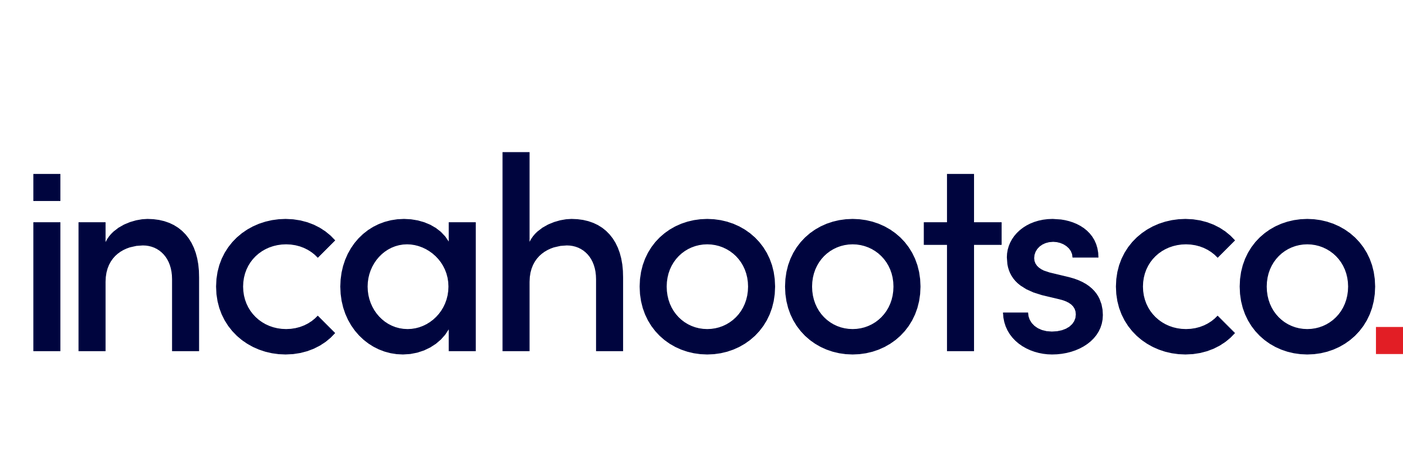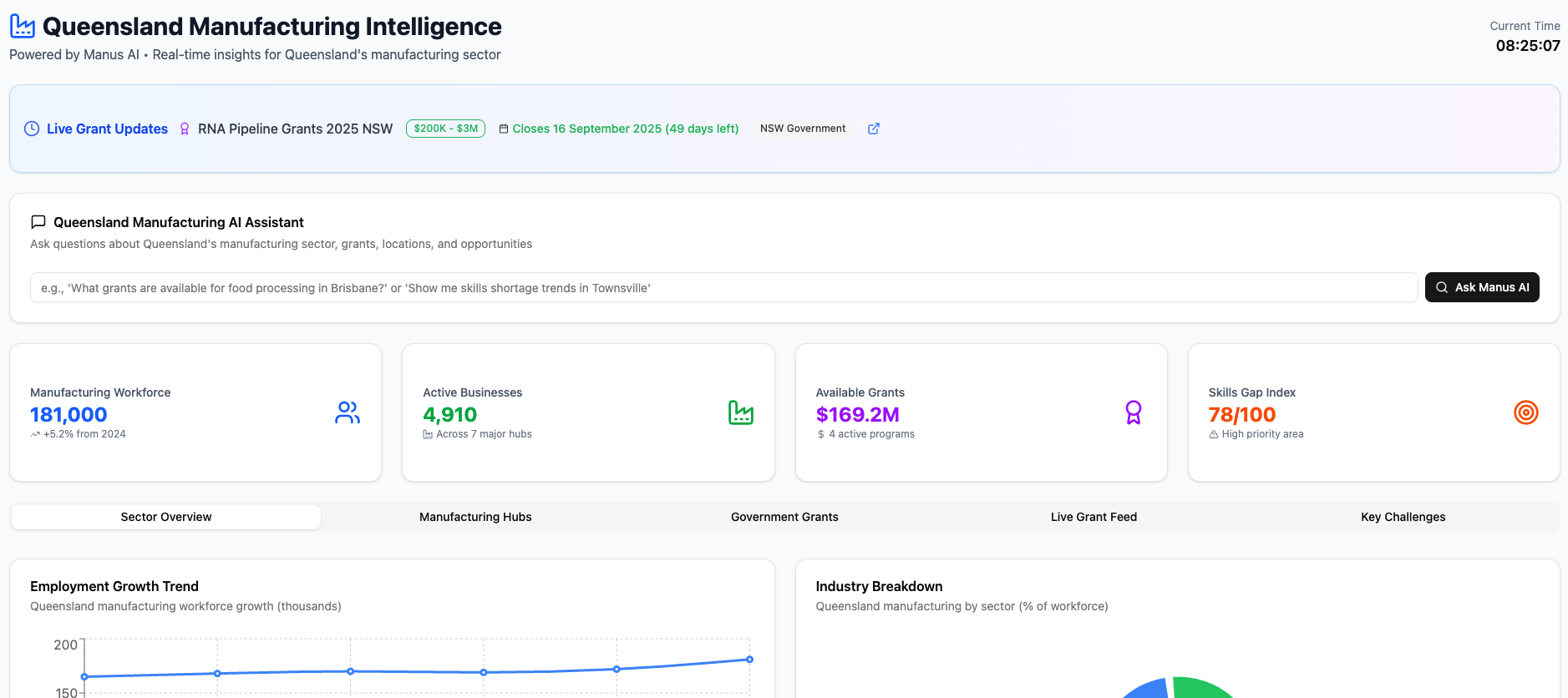AMCG Presentation

A Strategic Overview for AMGC Leaders
This interactive report demystifies the strategic impact of Large Language Models (LLMs) and AI Agents on the manufacturing sector. The goal is to move beyond technical jargon and focus on practical applications that drive productivity, foster innovation, and enhance global competitiveness for Australian manufacturers. Each section is designed for easy exploration, allowing you to focus on the topics most relevant to your business.
The LLM Landscape
A Large Language Model is a powerful AI trained to understand, generate, and synthesize human language. Think of it as an intelligent assistant for your business. This chart provides a high-level comparison of the major models based on their core strengths.
LLM Strengths and Differences
Choosing the right LLM is a strategic decision. Below is a more detailed breakdown of the unique advantages and considerations for each of the major models.
GPT-4 (OpenAI)
- ▶ Strengths: Unmatched versatility and creativity. Industry benchmark for general-purpose tasks, advanced reasoning, and code generation.
- ► Considerations: Closed-source with limited customisation. Can be resource-intensive and more expensive to scale.
Gemini (Google)
- ▶ Strengths: Natively multimodal, seamlessly handling text, images, and other data types. Deep integration with the Google ecosystem.
- ► Considerations: May not be as accessible to those outside the Google ecosystem. Verbosity can sometimes be a drawback in tasks requiring brevity.
Claude (Anthropic)
- ▶ Strengths: Exceptional long-context understanding, high factual accuracy, and a strong focus on safety and ethical alignment.
- ► Considerations: Prioritises reliability over creativity. May produce more conservative outputs compared to other models.
Llama 3 (Meta)
- ▶ Strengths: Open-source with multiple size options, making it highly flexible and customisable. Ideal for in-house deployment and full data privacy.
- ► Considerations: Requires significant technical expertise and infrastructure to deploy and fine-tune for specific business needs.
DeepSeek (DeepSeek)
- ▶ Strengths: Open-source model with a strong balance of performance and efficiency. Rivals larger, closed models at a fraction of the cost, particularly in reasoning and math tasks.
- ► Considerations: Still a newer player, which may lead to trust concerns regarding data security and long-term support.
Creating Custom AIs for Your Business
While a general LLM is a powerful tool, a **custom AI** is a specialist. By building a custom GPT (on OpenAI's platform) or a custom Gem (on Google's platform), you can create an AI that is laser-focused on your company's specific data, processes, and goals. This moves the technology from being a general assistant to a true subject matter expert for your team.
Example: Introducing Manu AI
Imagine a dedicated AI assistant for your manufacturing plant. We'll call it **Manu AI**. This custom AI is trained on all of your internal documentation, including technical manuals, machinery specifications, safety protocols, and quality control checklists.
- ▶ How it works: A technician can ask Manu AI a question in natural language (e.g., "What's the correct torque for the assembly on line 3?") and get an instant, accurate answer from the internal manuals, saving time and reducing error.
- ▶ Benefits: Increases productivity, ensures compliance with safety and quality standards, and dramatically shortens the learning curve for new and experienced staff alike.
The Next Frontier: AI Agents
If an LLM is the "brain," an AI Agent is the entire system in action. An agent combines the intelligence of an LLM with the ability to autonomously use tools—like your ERP, email, or other software—to complete complex, multi-step tasks. It moves from providing insights to executing plans.
LLM = The Brain
Understands and provides insights. It's a powerful consultant that can analyze data and recommend a course of action.
AI Agent = The Actor
Autonomously acts on insights. It's the project manager that takes the consultant's report and executes the plan from start to finish.
Practical Applications Today
These technologies can be applied across your business to solve real-world challenges. Below are key areas where LLMs and AI Agents can deliver immediate and future value, enhancing efficiency and fostering innovation.
Operations
- ➤ Identify bottlenecks from production data.
- ➤ Simplify complex Standard Operating Procedures.
- ➤ Optimize and automate routine workflows.
Knowledge & Training
- ➤ Create interactive, AI-powered technical manuals.
- ➤ Accelerate and personalize employee training.
Supply Chain
- ➤ Forecast demand by analyzing market data.
- ➤ Automate routine supplier communications.
- ➤ Proactively adjust schedules based on risks.
Innovation & R&D
- ➤ Use as a brainstorming partner for new products.
- ➤ Rapidly synthesize technical research and papers.
Global AI Powerhouses
The development of cutting-edge AI is a global effort, led by a few key countries and companies. Understanding this landscape provides context for where innovation and investment are concentrated.
| Company | Key Models | Country of Origin |
|---|---|---|
| OpenAI | GPT-4, GPT-4o | USA |
| Gemini, Gemma | USA | |
| Anthropic | Claude 3 | USA |
| Meta | Llama 3, Llama 4 | USA |
| Microsoft | Microsoft Copilot | USA |
| Baidu | ERNIE Bot | China |
| DeepSeek | DeepSeek-V3 | China |
| Mistral AI | Mistral Large, Mistral Small | France |
The Path Forward
Adopting AI is a strategic journey, not a single purchase. Here is a clear, manageable framework to begin integrating these powerful tools into your operations effectively.
Start with a Problem
Don't ask "How can we use AI?". Instead, ask "What is our biggest bottleneck?" or "Where is our greatest opportunity for an efficiency gain?". Focus on a specific business challenge.
Run a Pilot Project
Choose a low-risk, high-impact area to experiment. This allows you to learn and demonstrate value quickly without disrupting core operations.
Prepare Your Data
AI models are only as good as the data they are trained on. Prioritize data cleanliness and accessibility as a foundational step. This is the most critical prerequisite for success.
Empower Your Team
Provide training and foster a culture of experimentation. These tools are designed to augment your workforce, freeing them from repetitive tasks to focus on high-value problem-solving.




